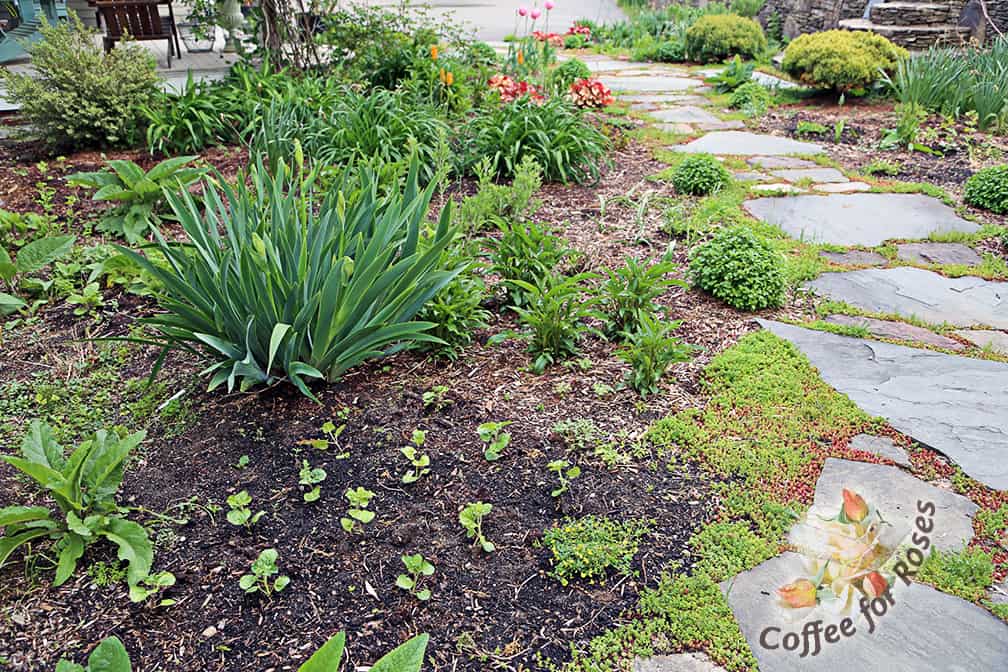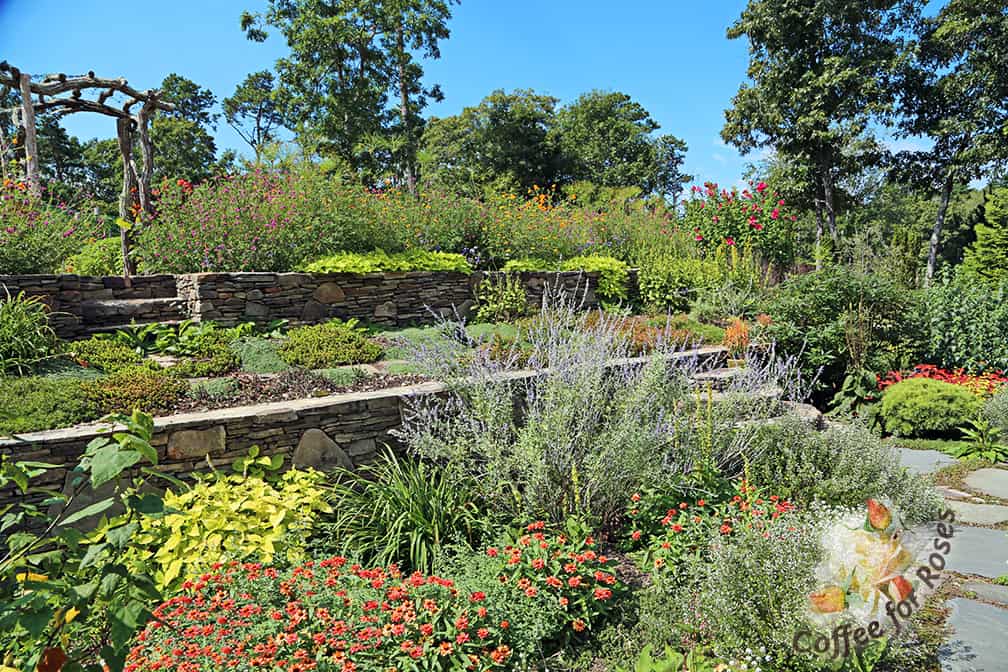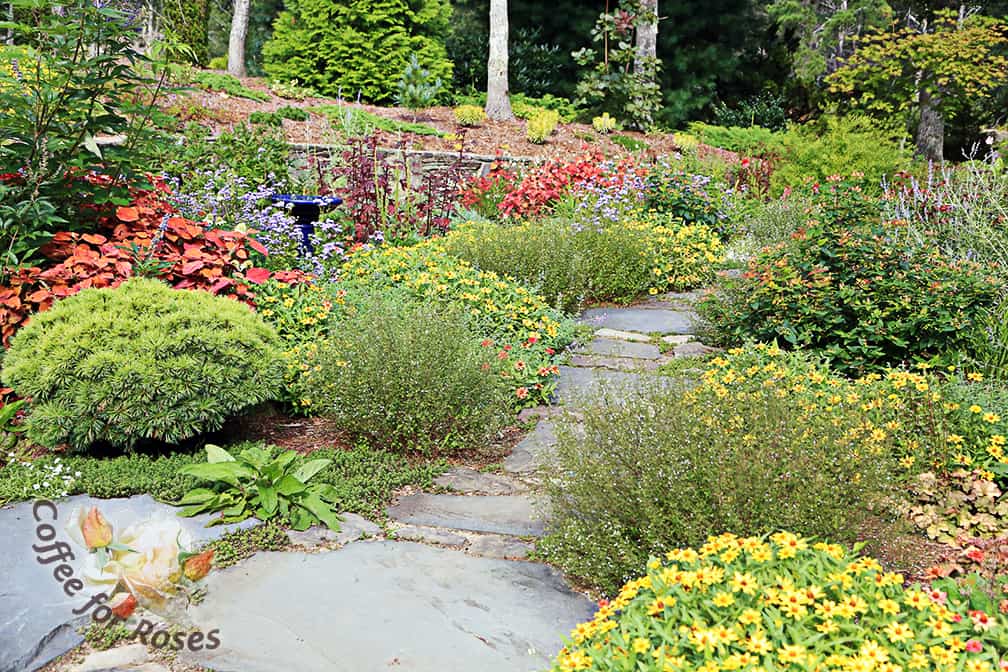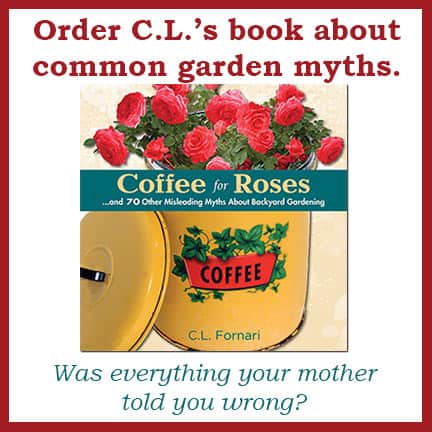I have several perennial gardens and in all of them I leave room for annuals. Annuals typically bloom for a longer period of time than perennials and they provide important bridge colors and textures that can unify beds and fill in areas where earlier blooming perennials have gone by. This past weekend we planted ‘Blue Horizon’ Ageratum and Mecardonia Gold Dust in the front garden and in the next week or two I’ll add Profusion zinnias (double deep salmon) and Sedona coleus.
Other annuals that mix especially well with perennials include:
Marigolds
Pennisetum Vertigo (huge purple grass)
King Tut papyrus
Scaevola
Calibrachoa (aka million bells)
Snow Princess and Frosty Knight Lobularia
Senorita Rosalita Cleome
Salvia ‘Black and Blue’
Hibiscus acetosella (red leaf hibiscus)
Nicotiana mutabilis and Nicotiana alata
Sunpatiens and New Guinea Impatiens

Here is how one section of my garden looks now. These small plants are Ageratum ‘Blue Horizon’ – they will be about 20 to 24″ tall in September and will flower with soft blue blooms all summer and well into the fall.

In this garden I used Deep Apricot Profusion zinnias in the past. On the left side near the wall is LifeLime coleus and the tall, wispy perennial with lavender flowers is Russian sage.

Last year I planted yellow Profusion zinnias along with the Ageratum, red leaf Hibiscus, and Sedona coleus.



